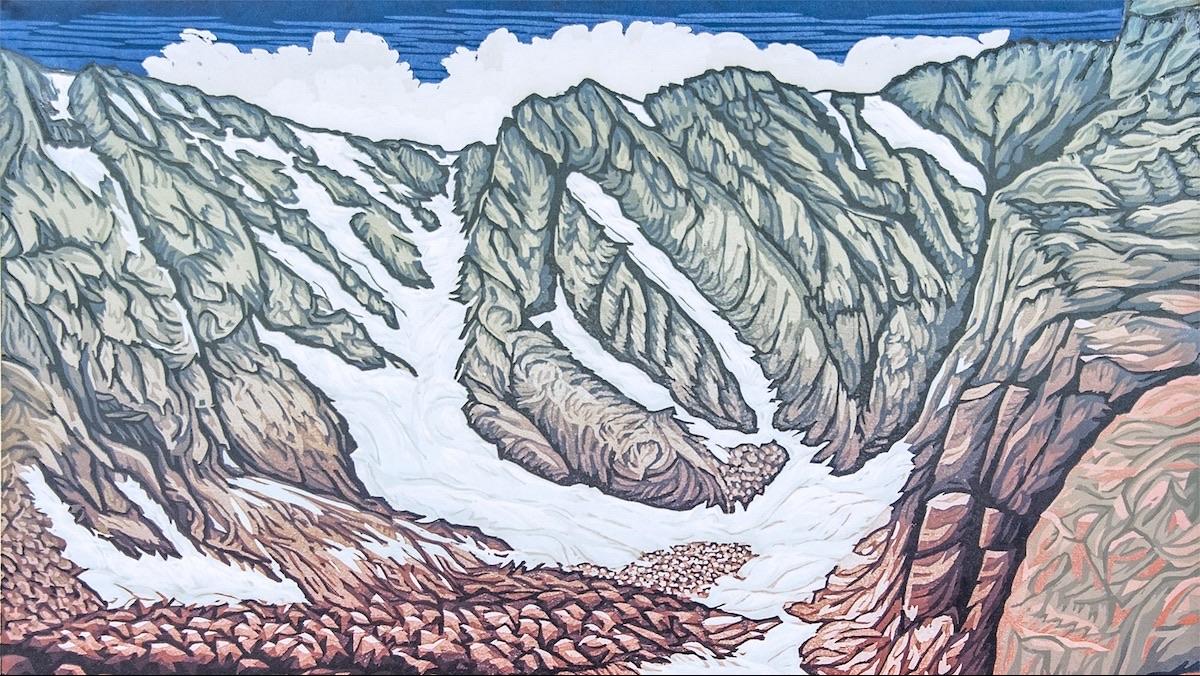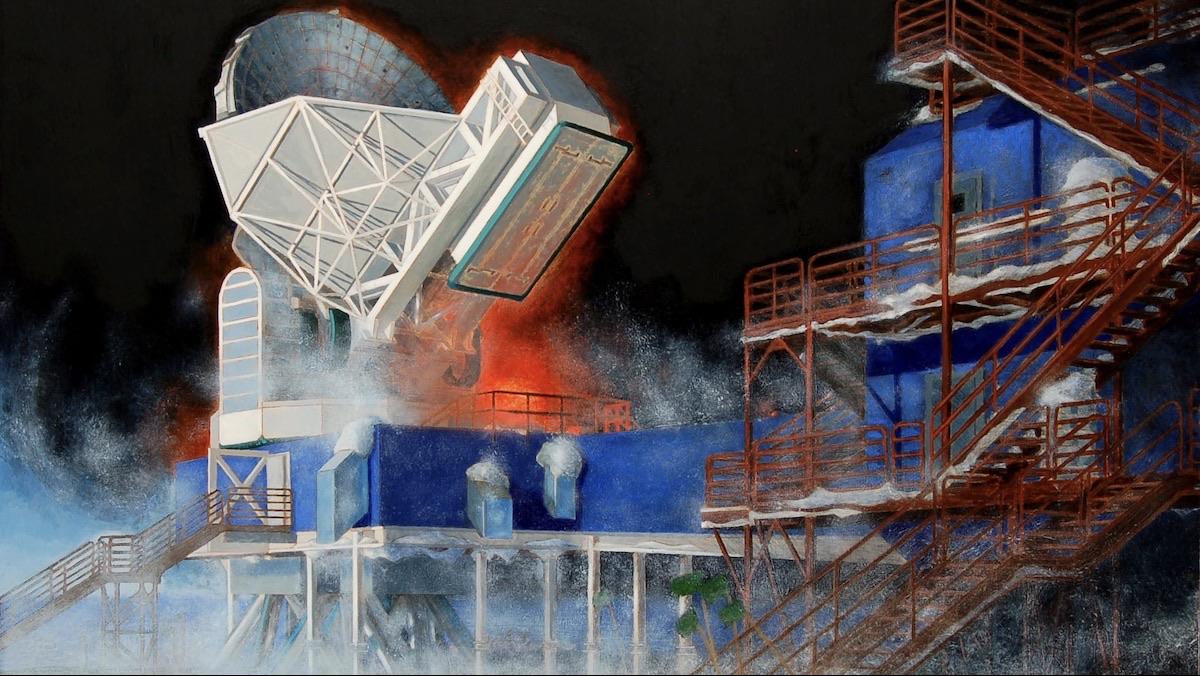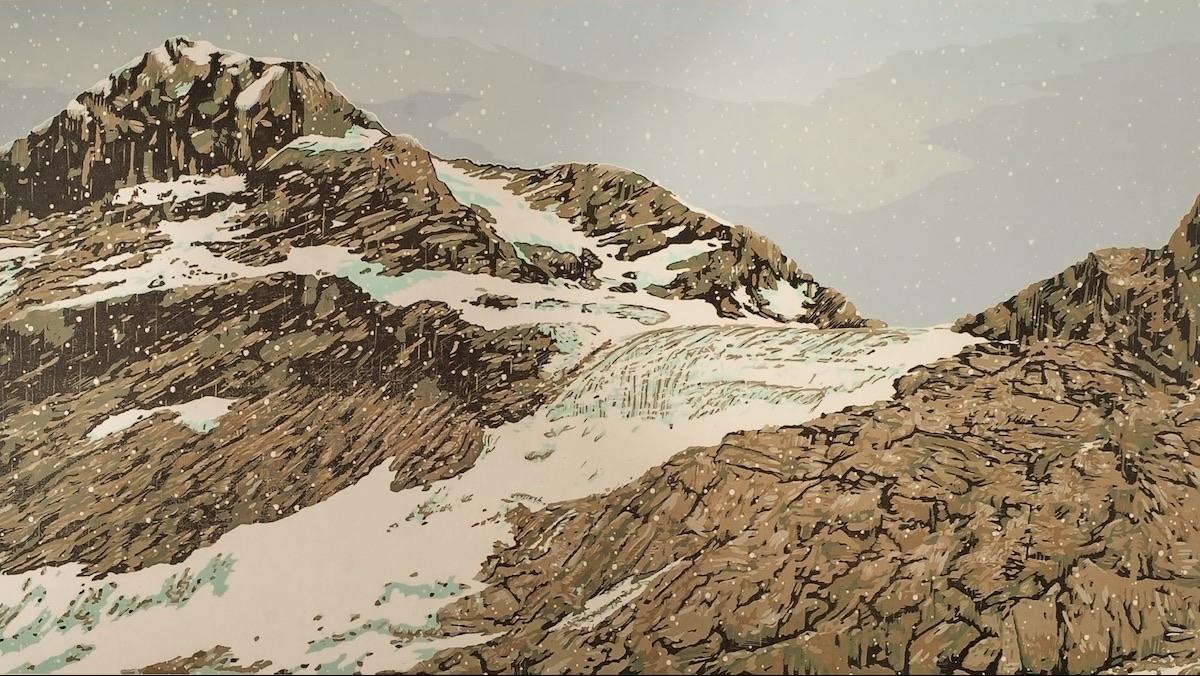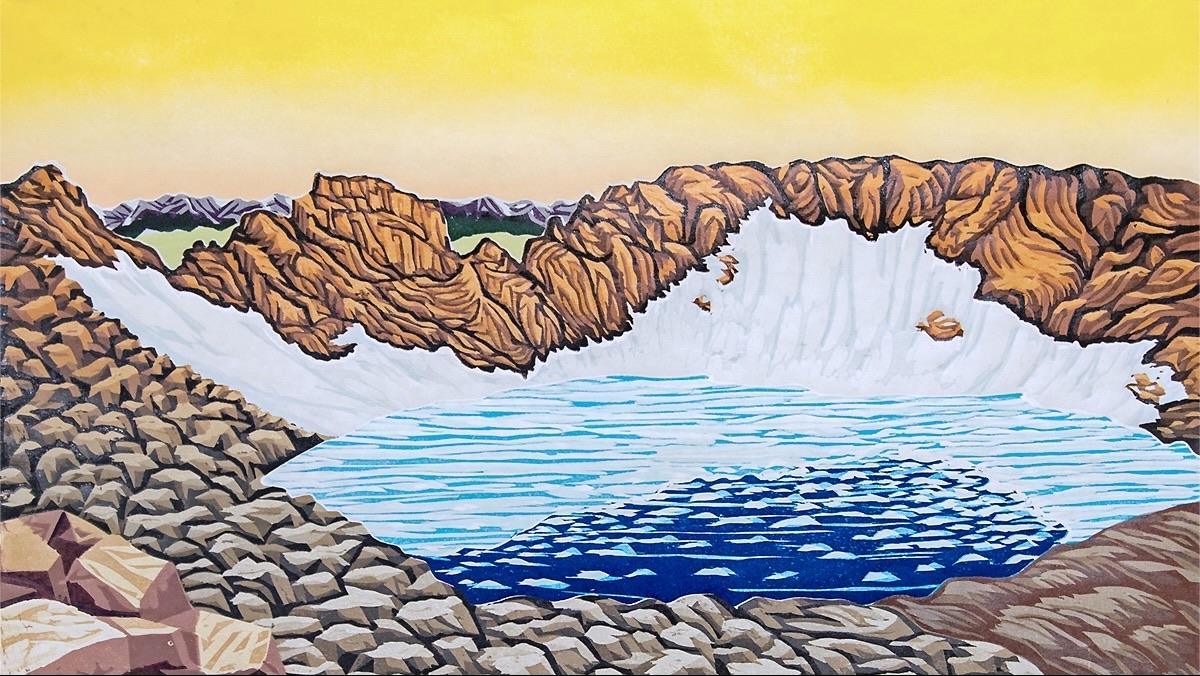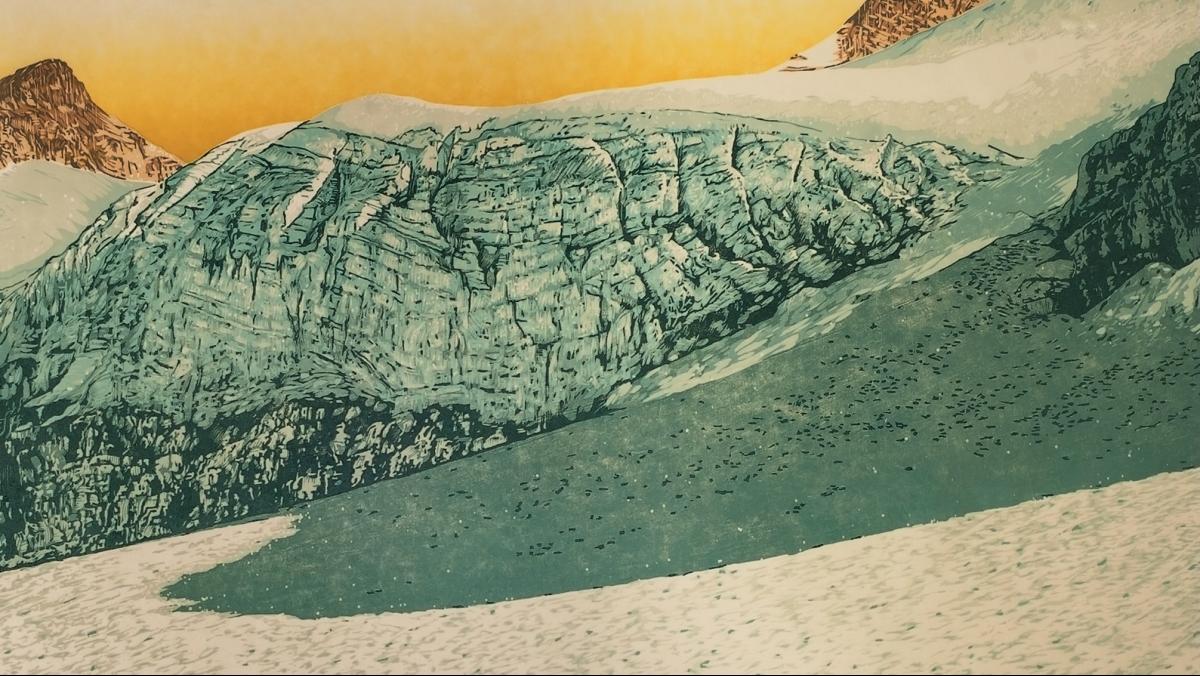Location
Deeply concerned about our global future, these artists make exquisite work that considers our fragile present from the perspective of deep time. The drama, brilliant color, and sheer beauty of their imagery tugs at our emotions and reminds us of the essential fragility of both human life and our planet's intricate ecosystems. Their art is also grounded in research, from the scientific record on glacial retreat to the history of Antarctic exploration. There will be an artists' reception in the gallery on Friday, December 3, from 6-8pm. Please note: the gallery will be closed Dec. 24-26 and Dec. 31-Jan. 1.
The Last Glacier: Todd Anderson, Bruce Crownover, and Ian van Coller
As The Last Glacier collective, printmakers Bruce Crownover and Todd Anderson and photographer Ian van Coller are dedicating their studio practice to capturing the fading majesty of earth’s remaining glaciers. Their project began as a response to the rapidly retreating glaciers of Glacier National Park, and has expanded to working with scientific collaborators at glacial landscapes in Iceland, Tanzania, Colorado, and beyond. Anderson and Crownover’s reductive woodcuts are, in the words of essayist Nancy Mahoney, “layered landscapes that go beyond realistic representations. Their prints portray a larger truth about the glacial texture, mass, subtle colorations, and antiquity, which cannot be captured in scientific prose.” In contrast, van Coller’s subtle, richly detailed photographs bring the texture and chilly grandeur of this disappearing landscape into sharp focus.
This exhibition will include framed, large-scale woodcuts and digital prints as well as copies of their monumental, limited-edition artists’ books: The Last Glacier (2015; 25 x 38 in.) and ROMO: The Last Glacier (2019, 17.5 x 23.5 in.), both hand-bound by master bookbinder Rory Sparks. ("ROMO" is the governmental abbreviation for Rocky Mountain National Park.)
Read more in this article from our magazine.
The Book of Miracles: Matthew Warren Lee:
Matthew Warren Lee’s oil paintings depict rugged landscapes interrupted and dominated by huge, sophisticated architectural follies and scientific instruments, from telescopes and particle colliders to neutrino detectors. The contrast between the turbulent natural environment, empty city buildings, and looming, ominous technology evokes questions about the promise of scientific discovery, the place of humans in the landscape, and the risks inherent in human interventions in nature. Through his research and his art, Lee seeks a new language to understand the present and contemplate possible futures, one that captures urgency and hope for both the preservation of nature and the ambitions of civilization.
Lee’s work has been influenced by his involvement with the U.S. Antarctic Program and the Carthage Institute of Paleontology; he often includes fossils and bones in the foreground of his landscapes, like witnesses from deep time. His exhibition will include a group of miniature paintings and sketchbook diaries that reflect his diverse interests and inspirations.
All images are details.
Thank to Wisconsin Academy donors, members, and the following sponsors for their support of this exhibition:


